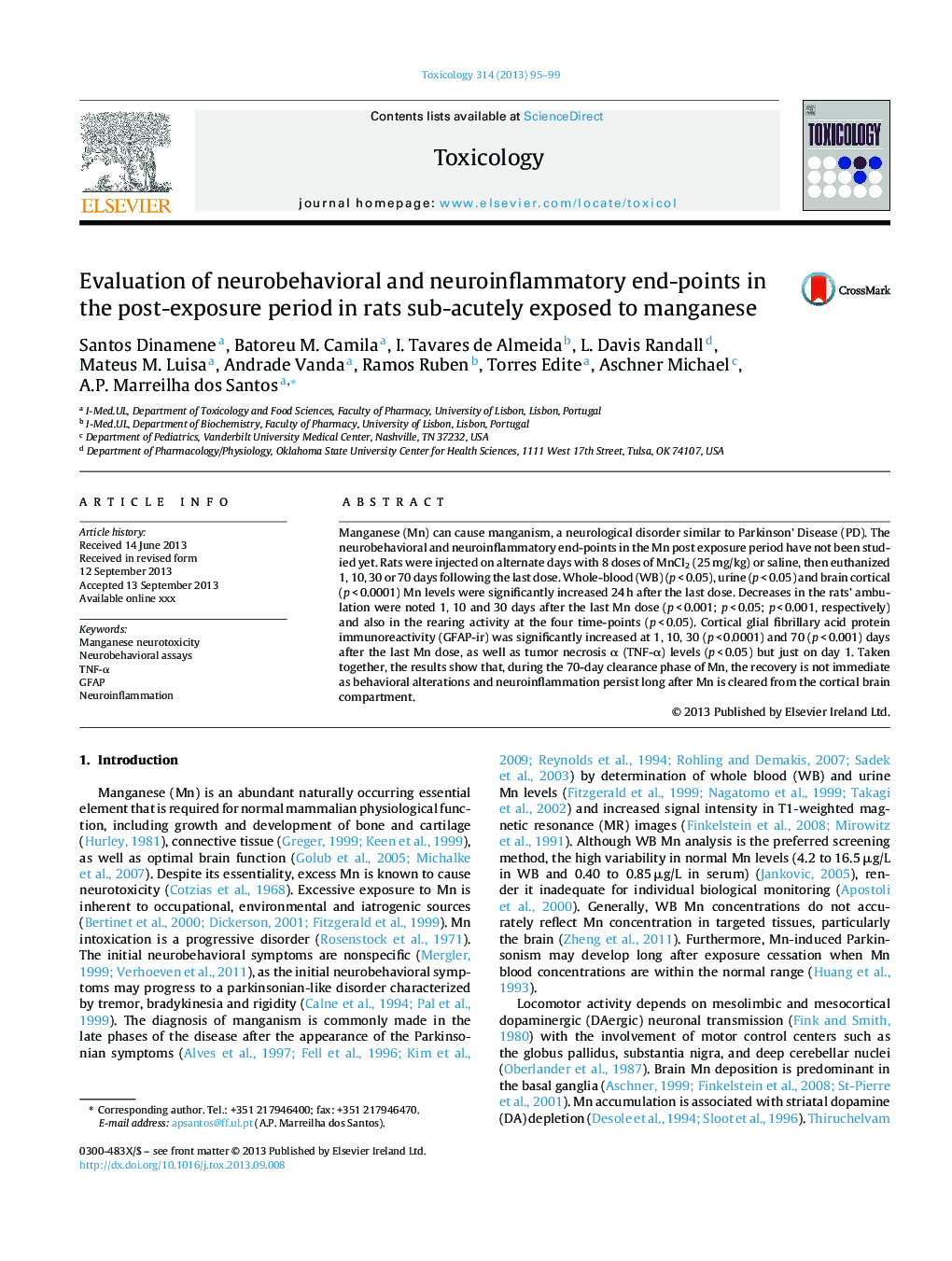| Article ID | Journal | Published Year | Pages | File Type |
|---|---|---|---|---|
| 5859317 | Toxicology | 2013 | 5 Pages |
Abstract
Manganese (Mn) can cause manganism, a neurological disorder similar to Parkinson' Disease (PD). The neurobehavioral and neuroinflammatory end-points in the Mn post exposure period have not been studied yet. Rats were injected on alternate days with 8 doses of MnCl2 (25 mg/kg) or saline, then euthanized 1, 10, 30 or 70 days following the last dose. Whole-blood (WB) (p < 0.05), urine (p < 0.05) and brain cortical (p < 0.0001) Mn levels were significantly increased 24 h after the last dose. Decreases in the rats' ambulation were noted 1, 10 and 30 days after the last Mn dose (p < 0.001; p < 0.05; p < 0.001, respectively) and also in the rearing activity at the four time-points (p < 0.05). Cortical glial fibrillary acid protein immunoreactivity (GFAP-ir) was significantly increased at 1, 10, 30 (p < 0.0001) and 70 (p < 0.001) days after the last Mn dose, as well as tumor necrosis α (TNF-α) levels (p < 0.05) but just on day 1. Taken together, the results show that, during the 70-day clearance phase of Mn, the recovery is not immediate as behavioral alterations and neuroinflammation persist long after Mn is cleared from the cortical brain compartment.
Related Topics
Life Sciences
Environmental Science
Health, Toxicology and Mutagenesis
Authors
Santos Dinamene, Batoreu M. Camila, I. Tavares de Almeida, L. Davis Randall, Mateus M. Luisa, Andrade Vanda, Ramos Ruben, Torres Edite, Aschner Michael, A.P. Marreilha dos Santos,
